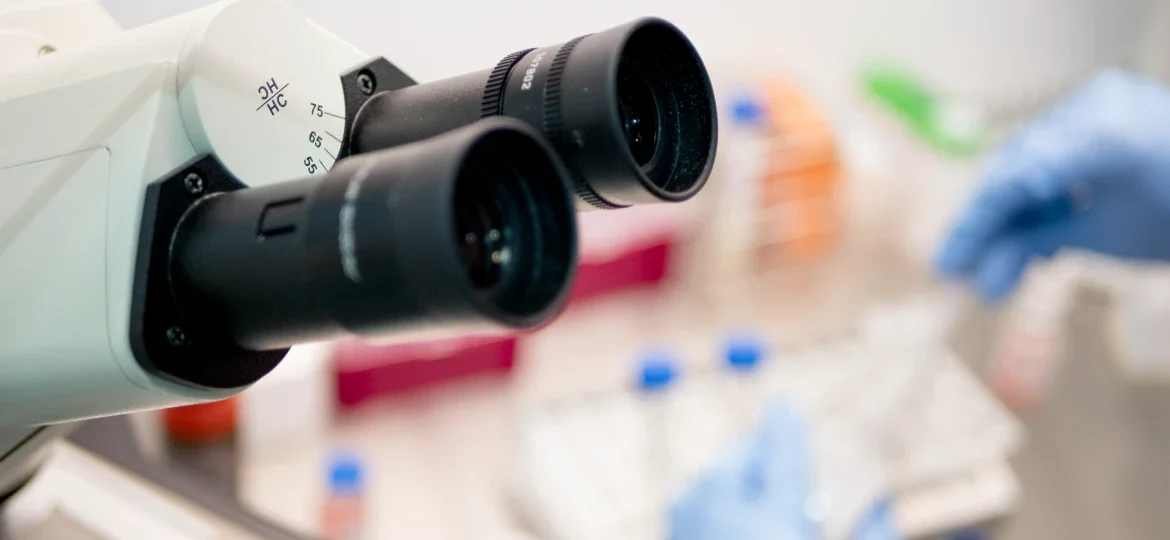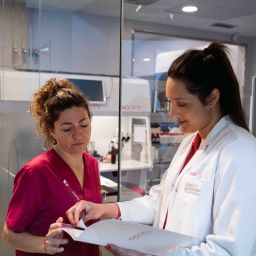
In reproductive medicine we usually focus on oocyte quality, embryo morphology or endometrial receptivity. But there is something else, something invisible to the human eye that can also make a difference: the microbiome. This ecosystem of microorganisms that inhabits our body -especially the female genital tract- is emerging as a silent but powerful player in fertility and in the outcomes of assisted reproduction treatments.
Microbiome, an ecosystem that speaks to us quietly
The uterus was long believed to be a sterile environment. However, thanks to advanced DNA sequencing techniques, we now know that microbial communities exist in both the vagina and the endometrium (Moreno et al., 2016). This finding has profoundly changed our understanding of the uterine environment.
The predominance of Lactobacillus bacteria – especially L. crispatus – is associated with an acidic, protective and anti-inflammatory environment. In contrast, dysbiosis characterised by the presence of bacteria such as Gardnerella, Atopobium or Prevotella can alter endometrial homeostasis and interfere with embryo implantation (Moreno et al., 2016).
The clinical that is not always measured
Many reproductive medicine professionals are familiar with the frustration of unexplained implantation failures in young patients with good embryos and no abnormal ultrasound findings. In these cases, an altered endometrial microbiota may be an unexplored clinical variable.
Pilot studies have shown that a non-Lactobacillus-dominated microbiota is associated with a lower clinical pregnancy and live birth rate after IVF (Kyono et al., 2019). In addition, pathologies such as chronic subclinical endometritis -which is often symptomless- may have a persistent microbial basis (Kitaya et al., 2017), suggesting that some implantation failures may have a bacterial origin.
Are we ready to intervene?
Although no standardised protocol yet exists, some specialised centres already incorporate endometrial microbiome analysis as part of the diagnostic approach in cases of repeated implantation failure or recurrent miscarriage. Interventions can range from targeted antibiotic treatments to vaginal or intrauterine probiotics and personalised embryo-endometrial synchronisation strategies based on microbial balance (Moreno et al., 2016; Kyono et al., 2019).
The scientific community agrees that more prospective and controlled studies are needed. However, the available evidence suggests that the microbiome should not be considered simply as an additional test, but as a key piece of the complex puzzle of assisted reproduction.
The human behind the microbial
In the consultation, when a patient is going through failed treatments, the last thing she needs to hear is that ‘everything is fine’, if it clearly is not. Looking beyond the usual, even at what we do not see with the naked eye, is also a form of empathetic accompaniment. Incorporating the study of the microbiome, when justified, can make a difference, not only in clinical outcomes, but also in the emotional experience of treatment.
We may not be able to control all the factors involved in embryo implantation. But we can continue to expand our understanding. On that path, the microbiome is no longer a minor player.
Moreno, I., Codoñer, F. M., Vilella, F., Valbuena, D., Martínez-Blanch, J. F., Jiménez-Almazán, J., … & Simón, C. (2016). Evidence that the endometrial microbiota has an effect on implantation success or failure. American Journal of Obstetrics and Gynecology, 215(6), 684–703.e1. https://doi.org/10.1016/j.ajog.2016.09.075
Kyono, K., Hashimoto, T., Nagai, Y., & Sakuraba, Y. (2019). A pilot study and case reports on endometrial microbiota and pregnancy outcome: An analysis using 16S rRNA gene sequencing among infertile women. Reproductive Medicine and Biology, 18(1), 72–82. https://doi.org/10.1002/rmb2.12254
Kitaya, K., Takeuchi, T., Mizuta, S., Matsubayashi, H., & Ishikawa, T. (2017). Endometritis: New time, new concepts. Fertility and Sterility, 108(2), 180–187. https://doi.org/10.1016/j.fertnstert.2017.06.004



